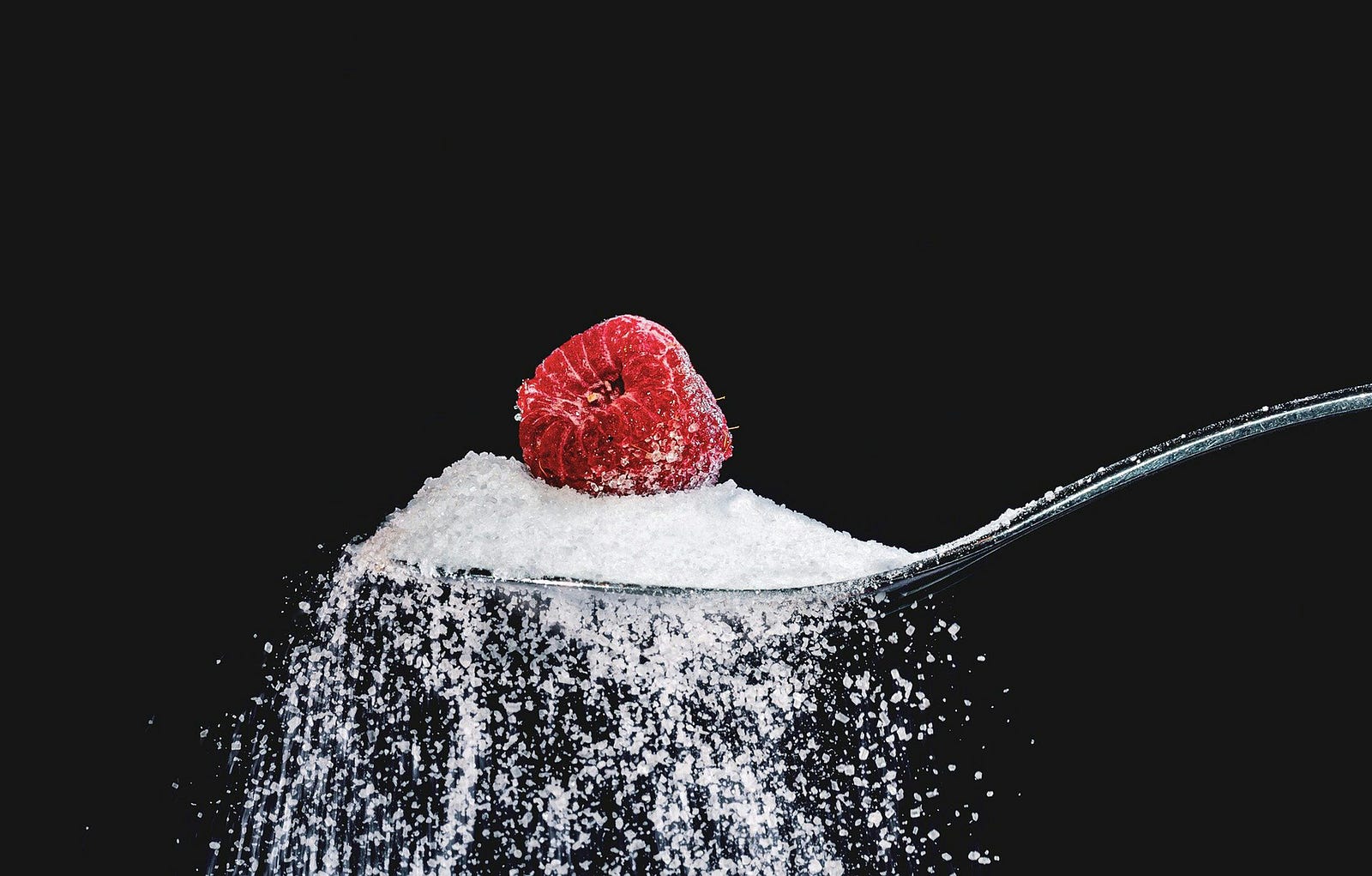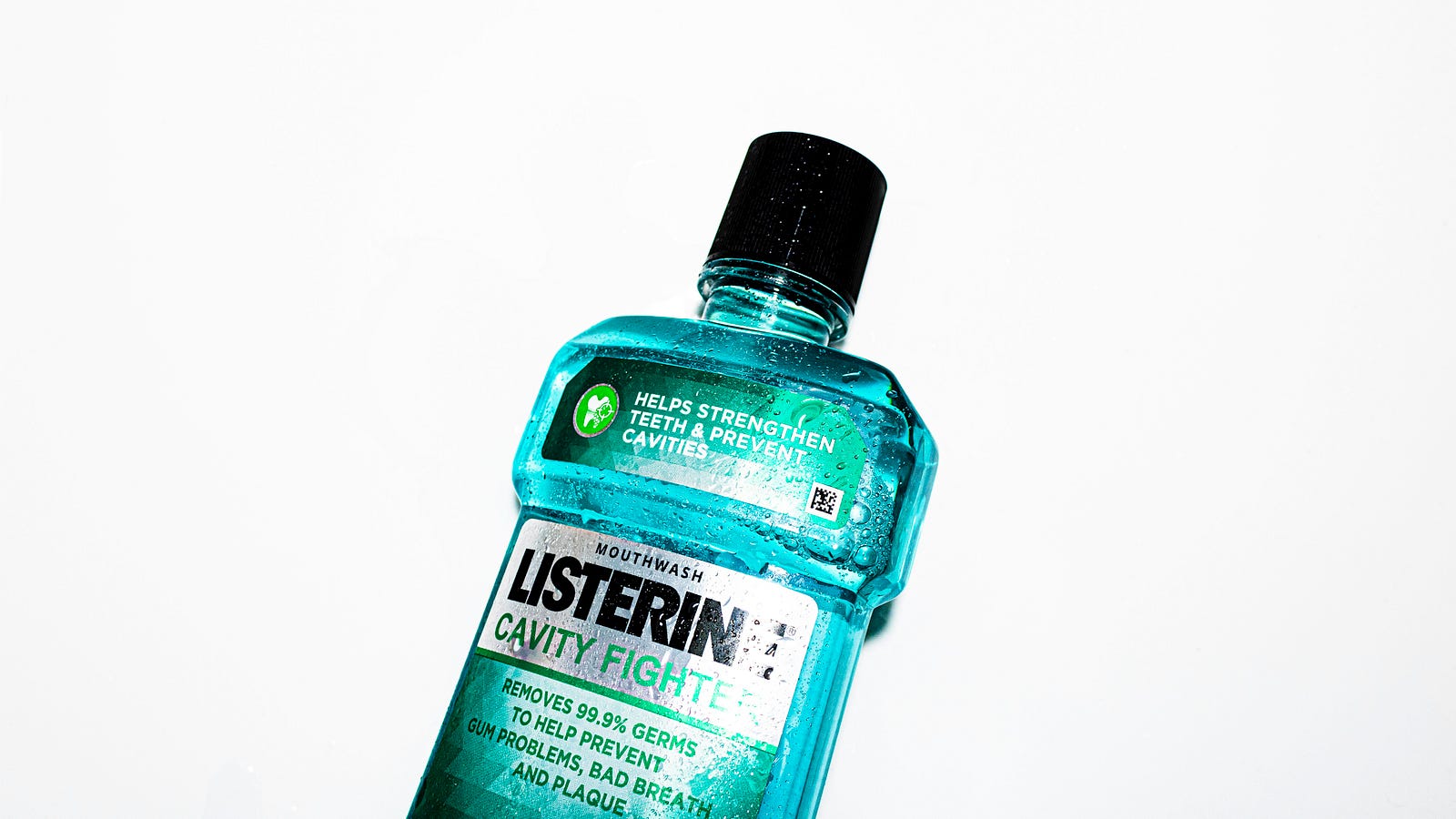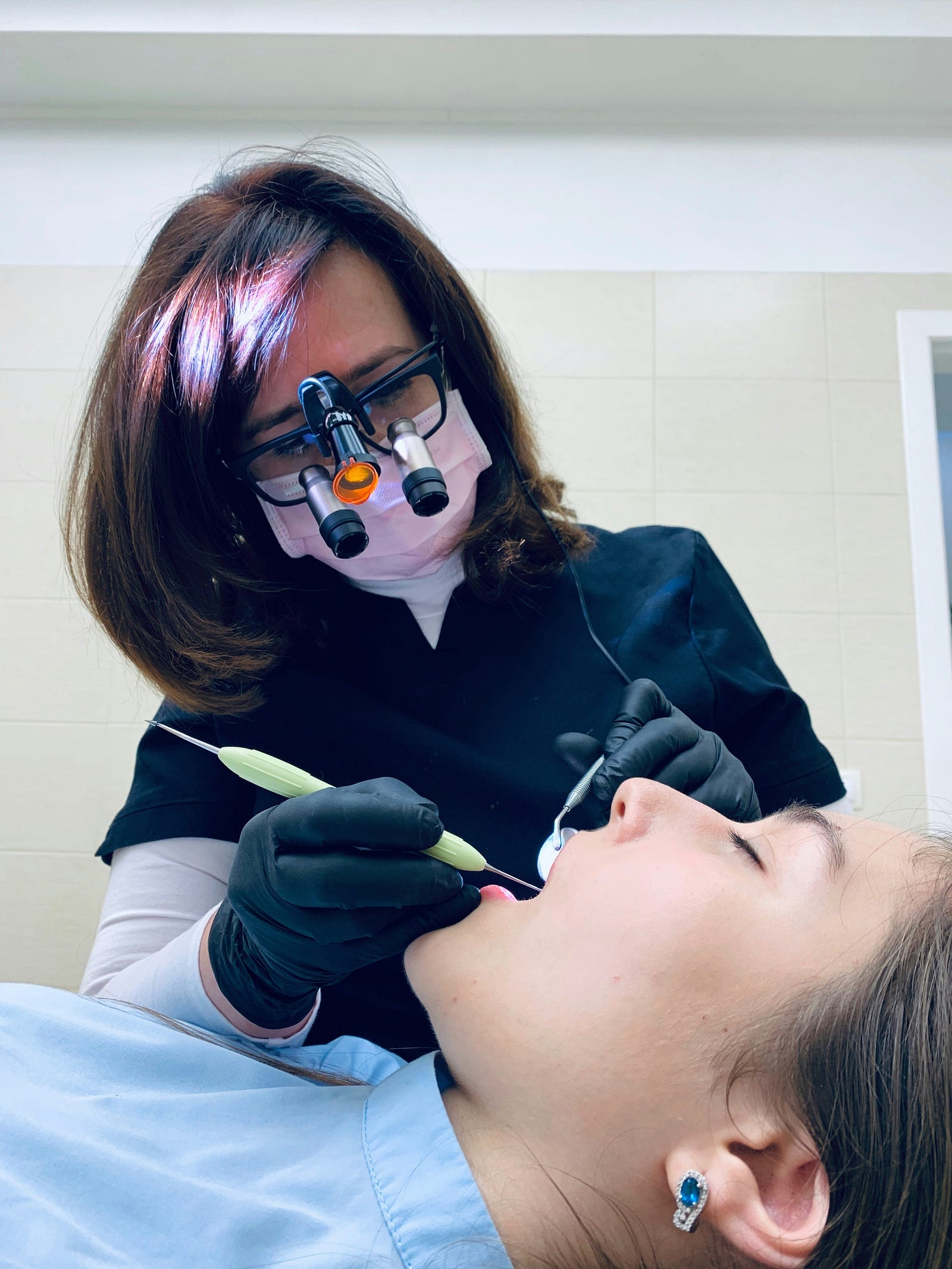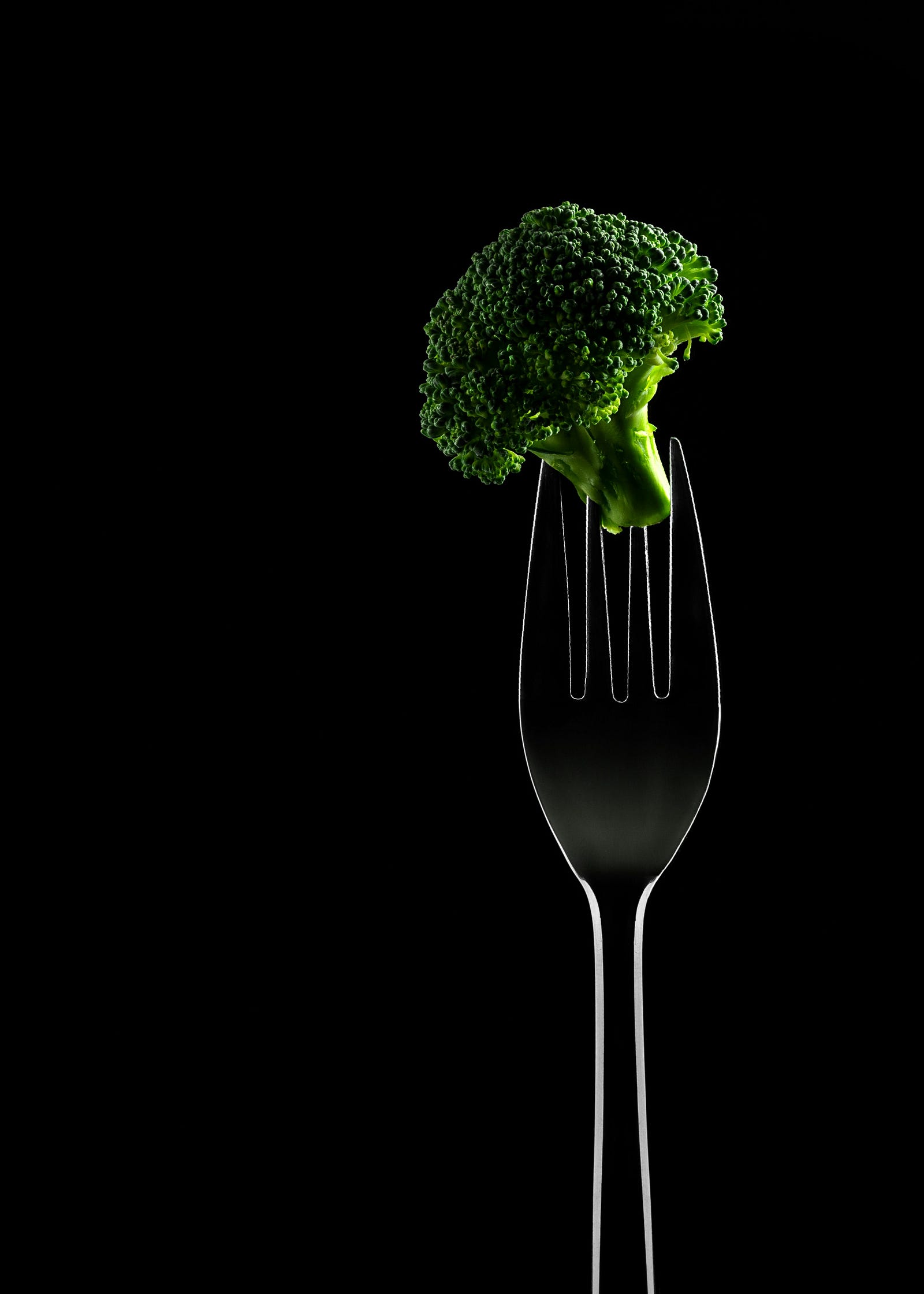GUM DISEASE IS CONNECTED TO TYPE 2 DIABETES. Gargling with mouthwash has been found to lower the risk of gum disease by eliminating harmful mouth bacteria. Today, I will explore a new study showing the association between mouthwash use and type 2 diabetes improvement.
A recent Japanese study looked into how using mouthwash affects both the bacteria in the mouth and the A1c levels (a measure of blood sugar) in people with type 2 diabetes.

While I do not have diabetes (or prediabetes), many of my patients do.
The idea that reducing gum disease (periodontitis) can lower a marker of diabetes severity (hemoglobin A1c) is exciting to me.
Today’s goals
I want to help you discover the amazing connection between mouthwash and managing Type 2 diabetes.
Recent studies have shown that gargling with mouthwash could help improve blood sugar levels in people with Type 2 diabetes.
It’s a simple and easy habit to incorporate into your daily routine that could positively impact your health.
I will also provide tips to help you dodge diabetes.
What is type 2 diabetes?
Type 2 diabetes is a chronic condition characterized by persistently high blood sugar levels.
It occurs when your body either doesn’t produce enough insulin, a hormone essential for regulating blood sugar, or your cells become resistant to its effects.

Here’s a breakdown of the key points:
- Insulin and its role: Insulin acts like a key, unlocking the doors to your cells and allowing glucose (blood sugar) to enter and be used for energy.
- Insulin resistance: In type 2 diabetes, your cells become resistant to insulin’s action, causing glucose to build up in the bloodstream instead of entering the cells.
- High blood sugar: This chronic state of high blood sugar (hyperglycemia) can damage various organs and tissues over time, leading to serious health complications.
Diabetes types
Insulin resistance is a big player in causing diabetes. When this happens, a chain of health issues can occur:
- Prediabetes: Imagine your blood sugar levels are slightly higher than normal but not quite in the diabetes range. That’s prediabetes. It’s like a warning sign, often caused by insulin resistance.
- Type 2 diabetes: If your insulin resistance becomes too tough for your pancreas (the insulin producer) to handle, your blood sugar levels rise, and you end up with type 2 diabetes. It’s like the next step when things get more serious.
- Gestational diabetes: This type happens during pregnancy. It’s believed that the placenta releases hormones causing insulin resistance. If your pancreas can’t cope, gestational diabetes kicks in. The good news is that it usually goes away after you have your baby.
So, insulin resistance is a key player in these diabetes-related conditions, and understanding it helps us manage and prevent them better.
Type 2 diabetes symptoms
The Mayo Clinic (USA) explains that diabetes symptoms may include:
Symptoms of type 2 diabetes often develop slowly. You can be living with type 2 diabetes for years and not know it.

When symptoms are present, they may include:
- Increased thirst
- Frequent urination
- Increased hunger
- Unintended weight loss
- Fatigue
- Blurred vision
- Slow-healing sores
- Frequent infections
- Numbness or tingling in the hands or feet
- Areas of darkened skin, usually in the armpits and neck
Please see your healthcare provider if you notice any symptoms of type 2 diabetes.
Mouthwash and diabetes
Having gum disease, called periodontitis, is linked to type 2 diabetes.
But here’s a cool discovery: using mouthwash might help.

A recent study checked how rinsing with mouthwash affects the germs in your mouth and the A1c levels (a measure of blood sugar) in people with type 2 diabetes.
The researchers found that if you gargle with mouthwash with a special ingredient called chlorhexidine gluconate (0.00056%) about two to three times a day for six months, it can seriously reduce the bad bacteria causing gum problems.
And an exciting additional finding?
In younger folks or those with higher A1c levels, their A1c levels dropped significantly after doing this mouthwash routine.
Interestingly, when younger individuals or males used mouthwash regularly, the count of harmful bacteria (red complex species) in their saliva significantly dropped.
So, it’s like a win-win — better oral health and improved blood sugar for certain groups.
Study details – Mouthwash and diabetes
Researchers instructed study participants to gargle with water for six months, followed by gargling with mouthwash containing chlorhexidine gluconate for the subsequent six months.
This study used the mouthwash called ConCool F® from Weltec Corp. in Osaka, Japan.
It’s got 0.05 percent chlorhexidine gluconate in it.

When the patients gargled with this mouthwash, the investigators asked them to mix it with tap water to make it pretty weak, around 0.00056% strength.
They added ten drops of the mouthwash to 25 mL of water for each gargle. So, it’s a diluted version to make it gentler when they use it.
During every clinic visit, the scientists collected saliva and checked for harmful bacteria using a polymerase chain reaction technique.
Simultaneously, they measured HbA1c (a simple blood test that measures your average blood sugar levels over the past three months) using a blood sample.
My thoughts – Mouthwash and diabetes
Getting professional care for your gums, like deep cleaning and using special mouthwash, may make a big difference for people with type 2 diabetes (T2D).
These interventions help reduce harmful bacteria in your mouth, which not only improves your gum health but also helps control your blood sugar levels.

Interestingly, we know professional care works well, but only a few studies have examined what happens when people do things independently, like using mouthwash regularly.
More research is needed to see how self-care, including simple things like gargling, affects the bad bacteria in the mouth and blood sugar levels of people with type 2 diabetes.
Not so fast – Mouthwash and diabetes
Please remember that the research on mouthwash and A1c reduction in T2D is preliminary.
It’s essential to emphasize the need for confirmatory research. Mouthwash should not replace established diabetes management strategies like diet, exercise, and medication.

Actionables — Lowering diabetes risk
Here are some of my strategies for reducing my chances of developing diabetes.
How many of them are you doing?
1. I screen.
The American Diabetes Association (ADA) suggests that most adults should start getting screened for diabetes at age 35.
However, if you’re under 35 and overweight or if you have other risk factors for prediabetes or type 2 diabetes, the ADA recommends considering diabetes screening even earlier.
It’s a prudent step to catch potential issues and control your health.
2. I watch my weight.
I know that carrying extra weight affects more than just my risk of getting type 2 diabetes.
Too much weight also contributes to problems like unhealthy cholesterol levels, high blood pressure, heart disease, elevated blood sugar, and stroke risk.
The bright side? Shedding as little as 10 to 15 pounds can bring about significant positive changes in your health.

3. I eat healthy fats.
I go easy on fatty foods (as I want to dodge the calories).
On the other hand, I know that not all fats are bad. I try to incorporate “good” unsaturated fats into my diet.
Nuts, seeds, and fatty fish (such as tuna, salmon, and cod) are some go-to foods. And I love to add extra virgin olive oil to, well, virtually everything.
Honestly, I have not banned “bad fats” from my diet. For example, I enjoy low-fat dairy and lean chicken or pork.
4. I skip fad diets.
Virtually every week, a patient shares with me their popular diet strategy.
Some trendy diets, like the glycemic index, paleo, or keto, might help them drop some pounds.
But, there is not much research on whether these diets have long-term benefits or if they help prevent diabetes.
5. I eat healthy plant foods.
Including fiber-rich foods in my diet helps me keep a healthy weight. The practice also reduces my diabetes risk.

Here are some healthy options:
- Fruits such as tomatoes, peppers, and tree fruits.
- Non-starchy vegetables like leafy greens, broccoli, and cauliflower.
- Legumes such as beans, chickpeas, and lentils.
- Whole grains, including whole-wheat pasta, bread, brown rice, oats, and quinoa.
Why my focus on fiber?
Why is fiber great?
It does some cool things, like slowing down sugar absorption, which helps lower blood sugar levels.

Fiber also messes with the absorption of dietary fat and cholesterol. Plus, it tackles other things that affect your heart, like managing blood pressure and inflammation.
One bonus: fiber-rich foods keep you full and energized, so you eat less.
Finally, I watch out for “bad carbohydrates” — those sugary foods with little fiber or nutrients.
I skip the white bread, pastries (generally), white flour pasta, fruit juices, and processed goodies loaded with sugar or high-fructose corn syrup. I’ve learned to keep it colorful and fiber-packed.
I’ll end with five hacks to crush your dietary fiber goals:
5 Hacks to Crush Your Dietary Fiber Goals
GET READY TO REVOLUTIONIZE YOUR RELATIONSHIP with food and wellness. I will share five hacks to crush your dietary fiber…medium.com
If you enjoyed reading this piece, please consider following me:
Thank you for reading “Mouthwash and Diabetes.”




